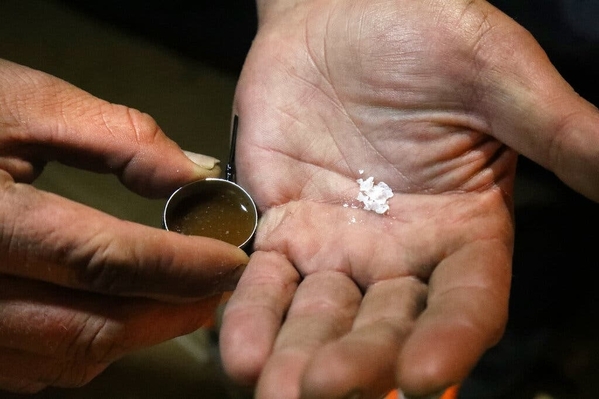By Center for Health Journalism, November 2021
Join award-winning journalist and author Sam Quinones in a webinar exploring the new reality of the nation’s addiction crisis and the most promising solutions emerging in communities. After appearing to level off, overdose deaths have skyrocketed by almost 30% since the beginning of the COVID-19 pandemic and by nearly 50% in some states. So many people are dying — more than 90,000 in 2020 — that the Biden administration is embracing strategies such as distributing clean syringes, once considered taboo.
In his searing new book, Quinones uncovers why the drug crisis has become even worse. “The Least of Us: True Tales of America and Hope in the Time of Fentanyl and Meth” reveals how the Mexican drug trafficking world capitalized on the addicted population created by the opioid epidemic to shift to fentanyl, a cheap, simple-to-make, and fatally powerful synthetic. At the same time, traffickers are flooding U.S. streets with a form of methamphetamine that is creating symptoms of schizophrenia and a surge in mental illness and homelessness. Quinones talks with Michelle Levander, director of the Center for Health Journalism, about how he reports on these overlapping threats and weaves together analysis of the drug trade, insights from neuroscience, and stories of the human toll to create a gripping narrative. With such massive supplies of drugs available at such low prices, he asks, does any addiction treatment stand much of a chance? Quinones also will share story ideas and tips for understanding and reporting on the changing addiction crisis in your community.
WHEN: Nov. 16, 2021, from 9-10 a.m. PT / 12-1 p.m. ET
[Please click here to register.]
*Read more on the topic of Fentanyl and Methamphetamine from Casey Schwartz of The New York Times, below.
How Fentanyl and Meth Took Over America
By Casey Schwartz, The New York times, November 2, 2021
 THE LEAST OF US
THE LEAST OF US
True Tales of America and Hope in the Time of Fentanyl and Meth
By Sam Quinones
American pain. This is the territory of Sam Quinones, a masterly reporter and vivid, lyrical writer, whose last book, “Dreamland” (2015), won a National Book Critics Circle Award and awakened readers to the problem of opiate addiction in the United States. In it, Quinones traced connections between pill-pushing doctors in Portsmouth, Ohio, and heroin dealers from a town in Mexico. It was Quinones who showed us that doctors had laid the groundwork for the influx of black-tar heroin by getting patients so hooked on OxyContin that they were desperate enough to turn to cheaper dope, any dope, when those pills ran out.
In “The Least of Us,” Quinones applies a similarly kaleidoscopic approach to “designer drugs” like fentanyl and methamphetamine. But his new work lacks the cohesion of “Dreamland,” a problem one senses early on. This, he tells us, is a book about fentanyl and methamphetamine and also about community efforts to combat addiction. Then why, one wonders, are we reading so much — five chapters — about OxyContin and the Sackler family, whose company, Purdue Pharma, produced it, material that would have been at home in his last book? (The answer seems to be that since Quinones published “Dreamland,” lawsuits against Purdue have revealed the tactics by which the Sacklers made their billions.)

Comments (0)